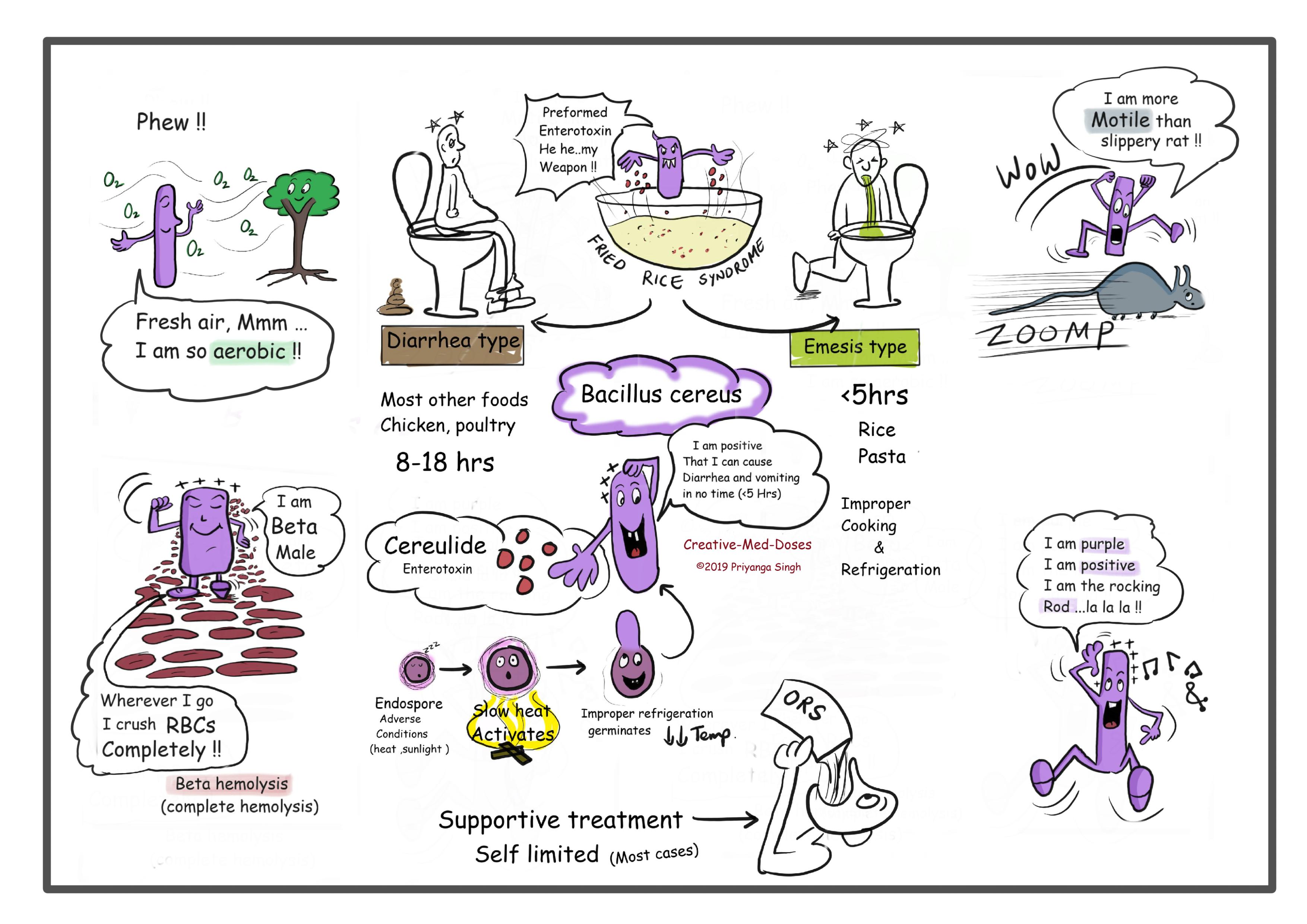Bacillus cereus : Reheated rice syndrome
Bacillus cereus is a Gram-positive, rod-shaped, aerobe, motile, beta-hemolytic, and spore-forming bacterium commonly found in soil and food. Cereus is a Latin word meaning “waxy” and refers to the waxy appearance of its growth on blood agar.
Transmission occurs via ingestion of spores or toxins.
...

...
It causes foodborne illnesses, Ingestion of food contaminated with endospores is the transmission mode. Cooking temperatures less than 100°c can allow microbes to survive, when such food is improperly refrigerated endospores germinate and form enterotoxin named Cereulide.
It occurs due to poor food cooking and storage. The spores are heat resistant and germinate after improperly storing cooked rice or pasta. The spores produce enterotoxins, preformed toxins present in contaminated food that are the main reason behind food poisoning associated with bacillus cereus. The toxin causing emesis is known as Cereulide.
Foodborne illness is also called Reheated rice syndrome.
There are two types –
- Emetic type- it is most commonly seen after ingestion of contaminated, improperly refrigerated rice and pasta. Nausea and vomiting within 1-5 hr of ingestion are chief symptoms.
- Diarrhea type- it causes watery, non-bloody diarrhea and abdominal cramping within 8-18 hr. of consumption.
Treatment
Fluid and electrolyte balance – oral rehydration solution.
Prognosis
Both emesis and diarrheal-type diseases are self-limiting and have a good prognosis.
Antibiotics – only in severe diarrhea. Clindamycin or Aminoglycosides.
..

...
Further reading https://www.ncbi.nlm.nih.gov/pmc/articles/PMC3232990/
Revision today https://creativemeddoses.com/topics-list/pseudomonas-aeruginosa-nosocomial-terrorist/